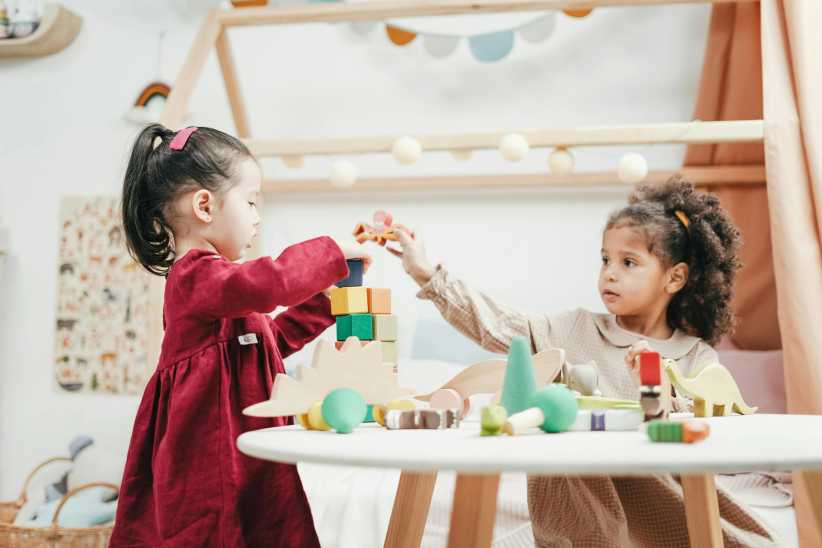If you’ve noticed something different about the homework your child is doing lately, you’re not alone. More and more teachers are flipping their classrooms so events that have traditionally taken place inside the classroom now take place outside the classroom, and vice versa.
Although college professors have been experimenting with flipping since then, the movement really picked up steam in the last two years because of two intersecting trends. On the one hand, teachers were complaining that they simply couldn’t get students to do traditional homework. On the other hand, they were trying to hold the attention of easily distracted students by showing online lectures and presentations.
Flipping the classroom frees teachers to interact more directly with students.
Instead of standing at the front of the room, knowing they are boring some students and confusing others, teachers turn lectures and presentations over to gifted and inspiring communicators. In the classroom, they take advantage of face time to personalize education, answering questions, leading discussions, encouraging collaboration, and coaching students through challenging material. Many teachers find they prefer being the guide on the side, rather than the sage on the stage.
Flipped classrooms are relatively new, so there hasn’t been systematic research about their effectiveness, though small studies show promising gains, especially in science and math. The benefits seem most obvious in high school, though some middle and even elementary schools are adapting flipped techniques for their students. If your child’s school has introduced this new approach, you’ll want to ask some very specific questions:
• What kind of technology will my child need? Some teachers put materials online so your child will be able to study with any internet-ready device, including a cellphone. Other teachers distribute materials on DVDs or flash drives. Ask about what arrangements can be made for students who don’t have access to technology at home. Can students stay after school or go to the local library to view teaching materials?
• What type of materials will be assigned? Some teachers create their own podcasts, videos, and powerpoints. Others depend upon materials developed by a textbook company or teachers from another school. Still others take advantage of the rich variety of online resources, assigning students to watch everything from TED talks to materials from the Khan Academy. Because your child will use these materials at home, be sure to sit in occasionally so you’ll have a deeper understanding of presentation style, as well as the content your child is expected to master.
• How much time should my child spend on homework? Some students (and parents) may be under the impression that flipped homework is easy because all that’s required is watching a video, or a visiting a website. Most teachers expect students to treat these materials in the same way they would a class lecture. Often students will be asked to take notes, answer questions, or write a short summary after watching the presentation. Parents can help by treating flipped work as seriously as they would any other kind of homework. Encourage your child to give the assignment his or her full attention, pausing and rewinding if something is hard to understand.
• What support will my child need at home? Provide a quiet place where your child won’t be distracted while studying. Headphones may be helpful, especially if there are other children in the room. As you would with other homework, encourage your child to block out a study time when he is alert. After 10 pm is usually not a good time for mastering new material in any form.
• What goes on in class? In the best flipped classrooms, students don’t spend much class time doing passive listening or paperwork. Depending on the subject, teachers may lead discussions, assign collaborative work, or give students problems and projects that ask them to apply what they learned the night before. This encourages deeper thinking that is often more satisfying for students who can instantly enlist the help of the teacher or even a fellow student.
• How does your child feel about learning? In a flipped classroom, students stop treating education as a spectator sport, and instead connect with a subject, ask questions and seek out answers for themselves. Gifted students often thrive because they can delve deeper into interesting subjects. Struggling sudents are also likely to benefit because they get more individualized attention from the teacher, and they can pause and rewatch materials at home.
• How are your child’s grades? If your child seems disengaged or you see grades dropping, schedule a conference with the teacher.
If your child’s teachers haven’t discovered flipped learning, take the initiative and access some of the terrific, online instructional materials. An excellent list is available at openculture.com. However, it is only the first step. Help children to evaluate and make sense of new knowledge by engaging them in conversations and activities that add context. It will help them become lifelong learners.
Carolyn Jabs, MA, raised three computer-savvy kids, including one with special needs. She has been writing Growing Up Online for 10 years and is working on a book about constructive responses to conflict. Visit www.growing-up-online.com to see past columns.
@ Copyright, 2012, Carolyn Jabs. All rights reserved.























